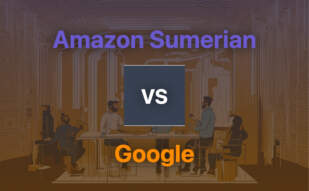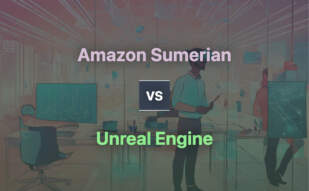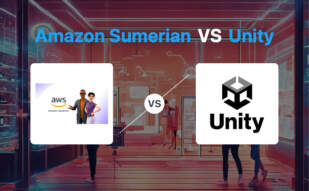Amazon Sumerian allows users to create, build, and run AR, VR, and 3D applications with intuitive tools and resources. It offers a web-based editor, an Object Library, supports various asset imports, and provides advanced scripting capabilities. Sumerian is aimed at developers without prior VR, AR, or 3D experience and is hosted via AWS Amplify for accessible 3D experiences. The platform integrates with Amazon Lex, Polly, AWS IoT, Lambda, and DynamoDB.
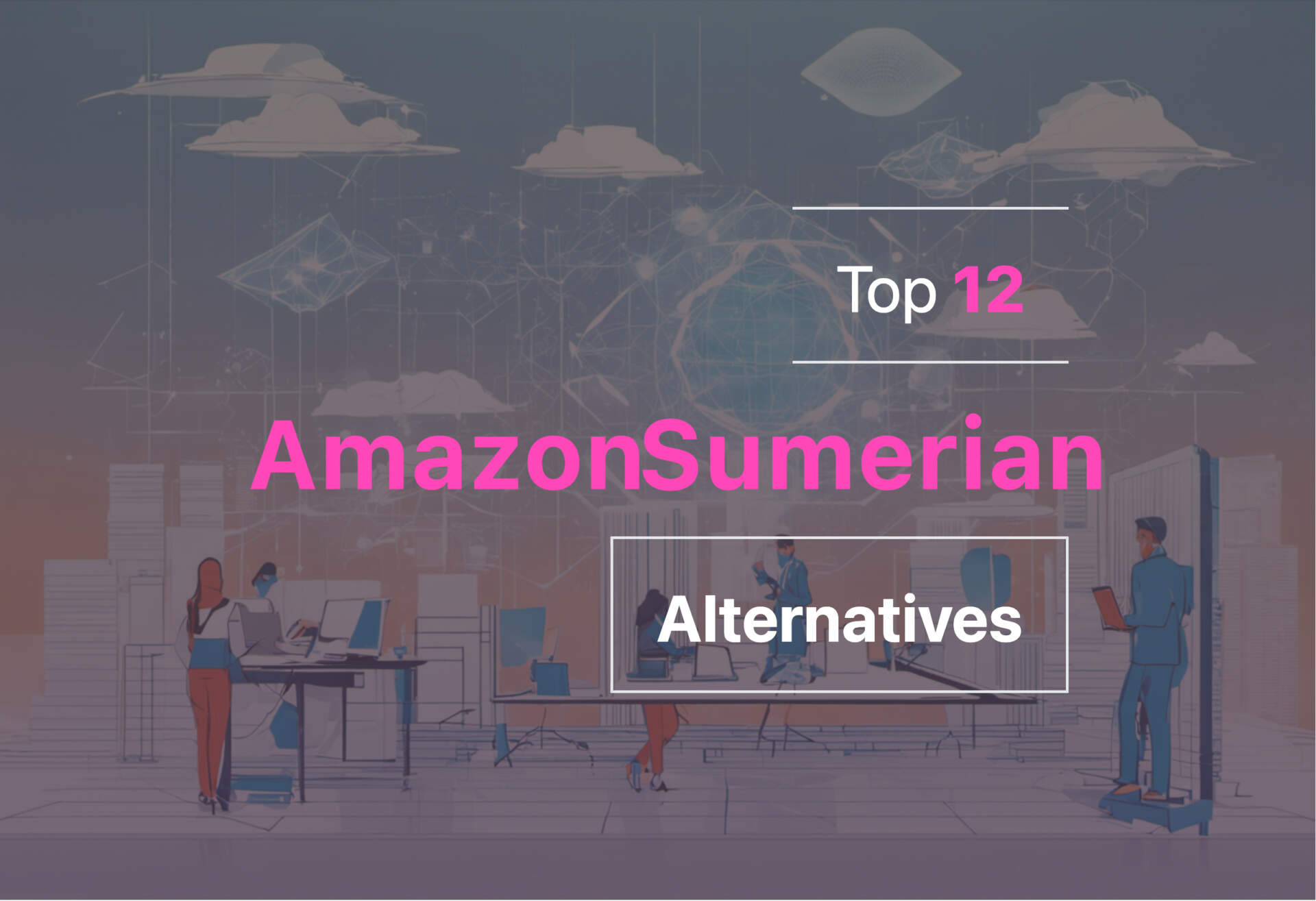
Looking for alternatives to Amazon Sumerian? Consider Three.js, Unity, Unreal Engine, Google, Babylon.js, and more.
Unity

Founded in 2005, Unity has established itself as a formidable platform for game development. Noted for its versatility, it enables developers to create everything from Augmented Reality applications to 3D simulations, serving both mobile and desktop-based platforms.
Unity Best Features
- Support for 2D and 3D game development
- Cross-platform game launching, including Android and iOS platforms
- Wide range of tools, robust rendering technology, and advanced features for high-quality game creation
- An extensive asset store with pre-designed textures and features for brainstorming game designs
- Supports various coding languages such as BOO script, Javascript, and C#
| Pro Version | Free Version |
|---|---|
| Offers significant features | Incorporates many features enabling sophisticated game production |
| Active Developer Community | Offers facilitating assistance, feedback and system improvement |
Unity Disadvantages
- New pricing model might strain solo, indie, mobile developers
- Potential for abuse of per-install fees
- Diminished trust due to sudden, unannounced changes
- Financial sustainability could be compromised by sudden pricing shifts
Unity Pricing
Unity implements a pricing model where developers pay a fee every time a game using their software is installed. However, the introduction of a new pricing model, set to take effect on January 1, 2024, has raised eyebrows in the developer community. The model includes per-install fees, retroactive fees and a higher fee for games bought in “standard” markets like the US and UK compared to “emerging” markets like India and China. To ensure fair play, Unity promises to introduce fraud detection practices and assures users that developers will not be charged an install fee until their game reaches $200,000 in revenue and surpasses 200,000 installations.
Unity Use Cases
Use Case 1: Cross-Platform Game Development
The ability to launch games across multiple platforms makes Unity a popular choice among developers looking to expand their user base. Its compatibility with Android and iOS platforms is particularly beneficial.
Use Case 2: Augmented Reality Applications
With its well-integrated suite of tools, Unity facilitates the production of sophisticated AR applications, making it an ideal match for developers working at the intersection of real and digital worlds.
Use Case 3: Community Engagement
An active developer community, equipped with a rich asset store, makes collaborative problem-solving and learning highly productive for Unity users, especially for novices in the game development industry.
Unreal Engine
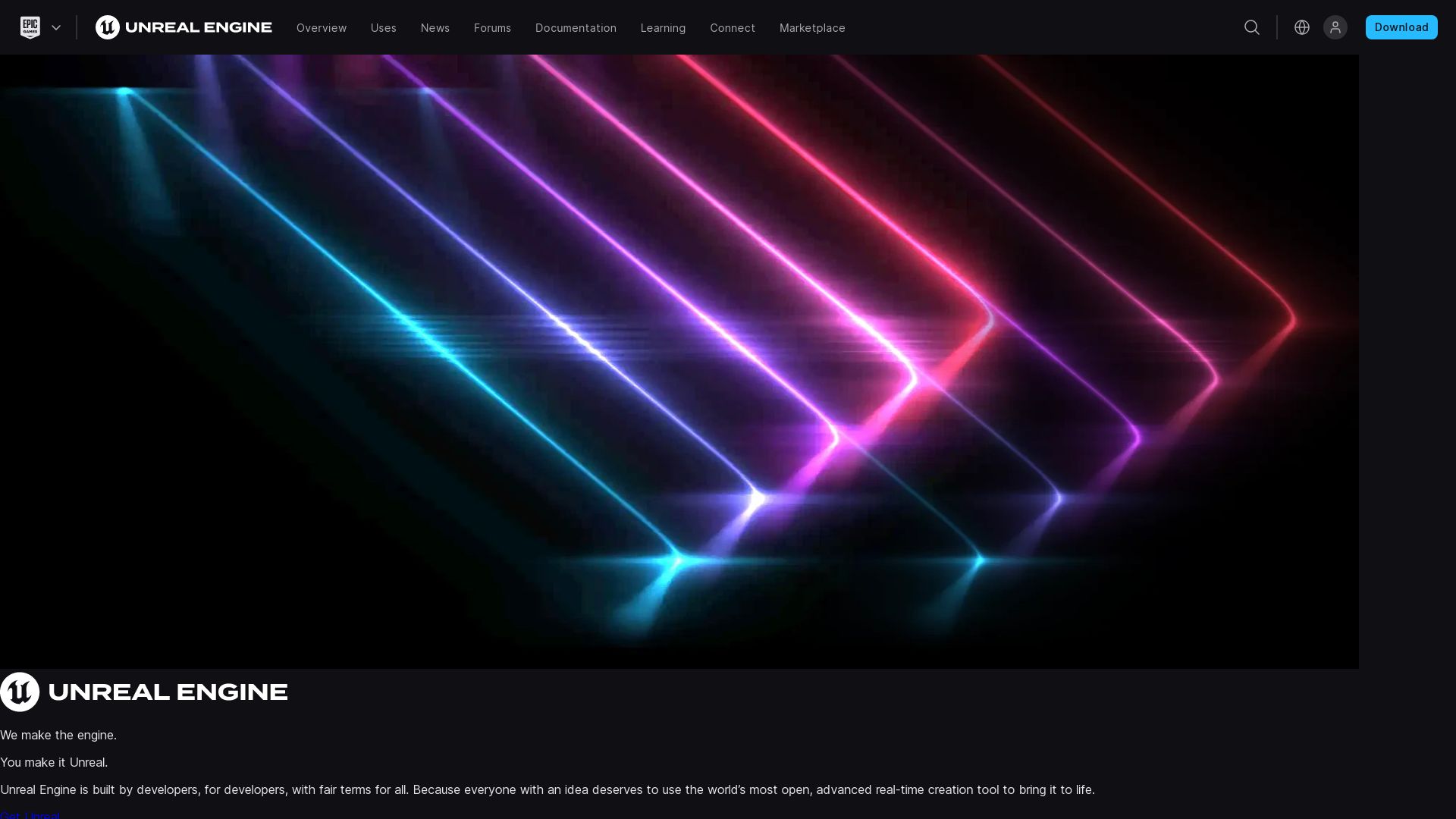
Birthed by Epic Games, the Unreal Engine is a formidable giant in the world of 3D computer graphics and game engines, having cemented its reputation since its debut in 1998. It weaves the potent algorithms of C++ to breathe life into myriad realms across not just desktop, mobile, and console, but also the virtual strata of reality. The engine has proven its versatility, extending its reach into films and television.
Unreal Engine Top Features
- Supports a wide range of platforms from desktop and mobile to console and virtual reality
- Empowers construction of solid geometry in real-time through UnrealEd, its level editor
- Grants modders considerable freedom, as seen with Unreal Engine 3
- Offers Unreal Development Kit (UDK), a free SDK version of UE3 to the public
- Harbors a marketplace that allows developers to sell their creations or purchase work of others
| Feature | Description |
|---|---|
| Unreal Engine 5 | The latest launch, Unreal Engine 5 (UE5), introduces a new epoch of unreal graphical wizardry. |
| Royalty Model | Epic Games, in an innovative gesture, waives off their royalty model for games published on the Epic Games Store. |
| Acquisitions | UE has taken under its wing features from acquired companies like Quixel, expanding the scope and quality of its offerings. |
Unreal Engine Limitations
- The programming language for developing games within the tool is restricted to C++. This might limit designers who are not well-versed in C++.
- About 5% of revenues over USD 1 million for commercial use is charged by Epic Games. However, royalties are waived off for games published in the Epic Games Store.
Unreal Engine Pricing
While the core engine is accessible for free, a payment of 5% of quarterly revenues beyond $3,000 is charged. Worth noting that for educational institutions, Unreal Engine is completely free.
Unreal Engine Use Cases
Use case 1: Game Development
Gleaning from an array of genres, the Unreal Engine capacitates creators to construct engaging gaming experiences, from first-person shooters to immersive VR realms.
Use case 2: Film and Television
The Unreal Engine transposes digital artistry onto the canvas of film and television production, assisting in the creation of breathtaking visual narratives.
Use case 3: Education
Educational institutions can utilize the Unreal Engine for practical pedagogy, fostering a stimulating environment for students to grapple with game design and real-time production tech.
GameMaker
Welcome to the enchanting realm of GameMaker, the algorithmic architect of 2D game graphics. An oasis for newbies who are learning the ropes of game design, and professionals seeking innovative ways of expressing their concepts.
GameMaker’s Key Features
- An easy-to-use platform, lauded for its scalability, simplicity, and comprehensive tools.
- A Language Server boasting Syntax Highlighting and Intellisense support facilitates various languages such as GLSL, HLSL, JSON, and XML.
- GameMaker Studio allows the creation of masterpieces like Orbit and Hyper Light Drifter.
- An unwavering commitment to engine upgrades based on novel features, essential maintenance, and user feedback.
| AI Support | Through a partnership with OpenAI, aims to simplify the game creation process. |
| Mod.io | An extension simplifying the addition of user-generated content. |
| Code Editor | A full-screen window provides convenient access to objects, events, and functions. |
GameMaker Drawbacks
The potential limitations of GameMaker largely depend on the complexity of the gaming concept. This excellent tool is focused on 2D game design, meaning it might not provide the required support for intricate 3D projects.
GameMaker Pricing
GameMaker appropriates a tier system, to suit varying needs: Free, Creator, brightening up the pathway to a game development career on desktop stores, Indie, a platform to display your opus across multiple channels, and Enterprise, a veritable canvas for studio releases on major consoles.
GameMaker Use Cases
Digital Dabblers and Professional Pioneers
GameMaker is the paintbrush at the fingertips of beginners. Its simplicity immerses them in game design before they even realise it, and soon, they’re conversant with the platform.
Indie Developers and Stardom Seekers
For indie developers, GameMaker forms the spark. It’s a launching pad for artists aspiring to bask in the brilliance of their own creations, like Undertale, Forager, and Chicory: A Colorful Tale.
Big-Time Studios and Market Makers
GameMaker is also a draw for studio teems wishing to release their blockbuster titles, providing an effective conduit for expression and communication.
Construct 3

Developed by Scirra Ltd, Construct 3 is an HTML5-based 2D video game engine, renowned for its ability to simplify the game development process for both beginners and professional developers. With an accessible online interface resemblant to professional-grade engines, it has gained substantial popularity among indie developers, educators, and within school curriculums across the United States.
Construct 3 Top Features
- Visual programming through ‘event sheets’, enabling swift and easy game development.
- Ability to run on any device with browser flexibility and offline support.
- An in-built pixel editor for game graphics enhancing aesthetic appeal.
- Integration with JavaScript as an optional scripting language, catering to advanced users’ needs.
- Strong support for behaviors such as solid, platformer, tile movement, anchoring and more.
| Feature | Description |
| Online Interface | Similar to professional-grade engines, enabling pseudo 3D visual and 2D video games creation. |
| School Curriculum Integration | Downloadable feature and easy programming process make it a favorable tool in schools, especially in regions with poor internet connectivity. |
| Data Privacy Compliance | Follows key regulations such as COPPA, CCPA, and GDPR. Provides resources such as starter curriculum, tutorials, manuals and support for educators. |
Construct 3 Limitations
- Not viable for 3D game development – Construct 3 is strictly 2D focused.
- Challenged in creating large-sized games due to system limitations.
- Lack of native exporters, resorting to the exportation of games as web apps or through HTML wrappers.
- No support for native and offline application behaviour, hence, creations for platforms like Apple TV are limited.
Construct 3 Pricing
Construct 3 offers a free license version and a paid subscription with expanded features with prices starting at $99/year for the personal plan.
Construct 3 Use Cases
Educational Use
Used as a coding curriculum in schools. Its uncomplicated programming process makes it a potent tool for introducing students to coding and game designing. Teachers can create advanced course curriculum simulating real-world game development scenarios.
Indie Development
With its simplicity and focus on 2D game creation, Construct 3 is a go-to tool for indie developers. With an event block system, developers can rapidly create games without the need for extensive coding knowledge.
Professional Game Development
Construct 3’s compatibility with JavaScript provides steady ground for advanced and professional users. The visual programming system allows for quick game implementation, facilitating the productivity of professional game developers.
With a firm foothold in the tech industry, Google has long been a powerhouse when it comes to offering plethora of services including Google Earth, Google Apps, Android OS, AdSense and owning the widely used video-sharing platform YouTube.
Google’s Top Features
- Google’s introduction of Chrome, a powerful and popular web browser.
- The development of Android OS. Known for its user-friendly interface and functionality, Android quickly came to dominate the mobile industry.
- Status as the owner of YouTube, the second most used search property, with billions of users across the globe.
- Ground-breaking tools like Google Earth and Google Maps that make geographical information readily accessible for anyone with internet access.
| Feature | Benefit |
|---|---|
| Google Analytics | Elevates understanding of website traffic and user patterns |
| Google Webmaster Tools | Identifies and troubleshoots server connectivity and site load issues |
| XML Sitemaps | Helps ensure efficient indexing of website pages |
Google Limitations
- Concerns over privacy persist. Despite using incognito mode, Google captures user data and leverages it to deliver personalized results.
- Indexing issues are common due to the sheer volume of information that Google must manage daily.
Google Use Cases
Use Case 1: Large-Scale Enterprises
Large enterprises can greatly benefit from Google’s expansive Analytics and Webmaster tools for site management and strategic decision making.
Use Case 2: Small-Medium Businesses
Small and medium businesses can leverage the global reach of YouTube for their digital marketing strategies.
Use Case 3: Personal Use
For personal users, Google’s Android OS offers a wide range of customizable features and a vast app ecosystem.
Babylon.js
Dive into the dazzling world of 3D graphics with Babylon.js, a groundbreaking real-time 3D engine that paints exuberant webs of polygons right in your browser.
Babylon.js Top Features
- Authored and developed by the proficient hand of Microsoft, emanating powerful performance and stability.
- Accessibility to GitHub source code under the wings of Apache License 2.0 granting inquisitive minds a peek into the foundations of this 3D engine.
- A gateway into the virtual realm, offering benefits like crime data visualization, educational understanding in medicine, military training and much more.
- Immerse in the precision of Babylon.js, with modeling processes driven by polygonal vertices formulating complex shapes.
- Photorealistic visualizations powered by sophisticated physically-based rendering and post-processing methods.
| Feature | Description |
|---|---|
| Language | Written in the seamless synergy of TypeScript and JavaScript, encouraging flexible usage. |
| Animation | Employs skeletal animation with blend weights, invoking life into your character models. |
| Physics Engines | Compatibilty with Cannon.js and Oimo, enabling the simulation of real-world collisions and reactions. |
Babylon.js Limitations
- Primarily utilizing constructive solid geometry only to a limited extent, oriented towards simpler geometric manipulations.
- Dependent on browsers supporting HTML5 and WebGL, may narrow user accessibility.
Babylon.js Pricing
The brilliance of Babylon.js comes at no cost. It’s entirely open-source, dusting your 3D projects with the magic of freedom alongside quality.
Babylon.js Use Cases
Education in Medicine
Equip the enquiring minds of tomorrow’s healthcare visionaries. Babylon.js solves the riddle of complex biological processes, rendering them in 3D for optimal learning.
Military Training
Prepare for the unconventional battlefield. Babylon.js transcends the confines of reality, delivering comprehensive, safe and engaging training environments.
Fashion Avatars
Unleash the virtual ripples of fashion into reality. Babylon.js curates custom scenarios bringing our style aspirations to life, one polygon at a time.
Three.js
Three.js is a cross-browser JavaScript library and API originally authored by Ricardo Cabello. It’s designed for creating and displaying animated 3D computer graphics in web browsers. The incredible factor: No browser plugins are needed, thanks to the integration of WebGL. First born in 2010, it’s been enriched with contributions by over 1700 collaborators on Github.
Three.js Top Features
- Enables GPU-accelerated 3D animations via JavaScript.
- Offers compatibility with WebXR to support Virtual and Augmented Reality.
- Packs multiple effects, scenes, cameras, animations, lights, materials, shaders, objects, and geometry.
- From v118, WebGL 2.0 is the default, though older versions can be accessed through WebGL1Renderer class.
- Runs seamlessly on any browser that supports WebGL 1.0.
| Contributor | Contribution |
|---|---|
| Ricardo Cabello | API design, CanvasRenderer, SVGRenderer |
| Paul Brunt | WebGL implementation |
| Branislav Uličný | Materials, shaders, post-processing |
| Joshua Koo | Geometry generation |
Three.js Downsides
- The high-level libraries, while feature-rich, might come with a steeper learning curve for beginners.
- Compatibility is reliant on browser support for WebGL 1.0 and above.
Three.js Pricing
With the generous MIT License, Three.js is accessible free of charge to users worldwide.
Three.js Use Cases
Use case 1: 3D Modeling and Animation
Three.js, with its web-based, GPU-accelerated 3D animation capabilities, simplifies the creation, running, and displaying of complex 3D models and animations.
Use case 2: Virtual and Augmented Reality
Leveraging the WebXR compatibility, developers can use Three.js to craft immersive VR and AR experiences directly within the web browser, expanding application accessibility.
Use case 3: Interactive Web Content
By utilizing its in-built functions and features, Three.js enables creators to produce interactive 3D content for websites, enhancing user interactivity and engagement.
jMonkeyEngine
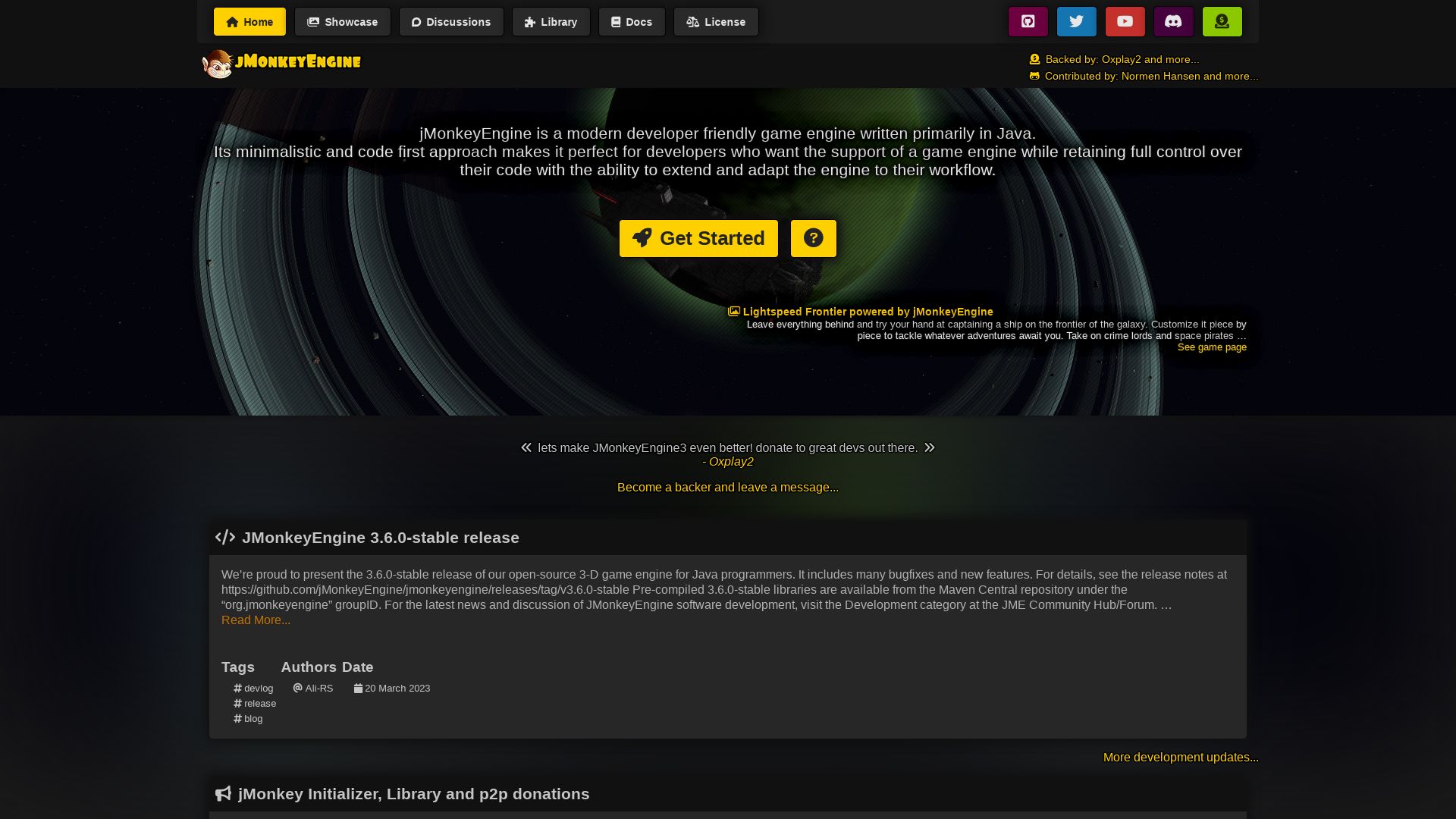
Meet jMonkeyEngine, a powerful, Java-based game engine renowned for its compatibility with Android and the NetBeans Platform. Engineered primarily for developers, this minimalist, open-source 3D game engine adopts a code-first approach, empowering you with the freedom and flexibility to build your vision from the ground up.
jMonkeyEngine Top Features
- Seamless cross-platform compatibility: Publish your games to PC, Linux, iOS, Android, and Mac with ease and efficiency.
- Wide-ranging GUI options: Choose from Lemur, Nifty GUI, IGUI, and more to deliver an engaging, interactive experience.
- Immersive 3D audio support: Harness the power of OpenAL or jmePhonon to create captivating soundscapes.
- Rich physics support: Use jBullet or Minie to craft realistic, engaging game environments.
- High-quality graphics package: Includes stunning post-process water, light scattering, bullet physics, normal and specular maps to breathe life into your creations.
| Features | Description |
|---|---|
| Advanced particle abilities | Provides multiple options for creating rich, dynamic visual effects. |
| Multiple networking options | Includes Spidermonkey, SimEthereal, Monkey Netty, enabling seamless communication across your game. |
| Terrain libraries | For crafting intricate, expansive landscapes that immerse your players. |
jMonkeyEngine Limitations
- While powerful, jMonkeyEngine is a lower-level game development tool, so expect a learning curve if you’re new to game development or programming.
- jMonkeyEngine primarily targets developers, so its minimalist interface, while powerful, may present a hurdle for beginners.
jMonkeyEngine Pricing
Step into the future of game development for free, with jMonkeyEngine’s permissive BSD 3-Clause license. As an open-source platform, it’s available to all who dare to dream and do.
jMonkeyEngine Use Cases
Use case 1: Game Education Programs
jMonkeyEngine’s comprehensive documentation and active community support make it perfect for game-education programs catering to both young learners and adults.
Use case 2: Serious Game Development Projects
Its powerful features, coupled with active community support, make jMonkeyEngine an attractive choice for serious game development projects, as displayed by its use in creating multiple commercial games.
Use case 3: Game Development Education for Children
jMonkeyEngine’s compatibility with resources like Greenfoot, Alice, and Kojo renders it a viable tool for introducing children to the exciting world of game development.
Phaser
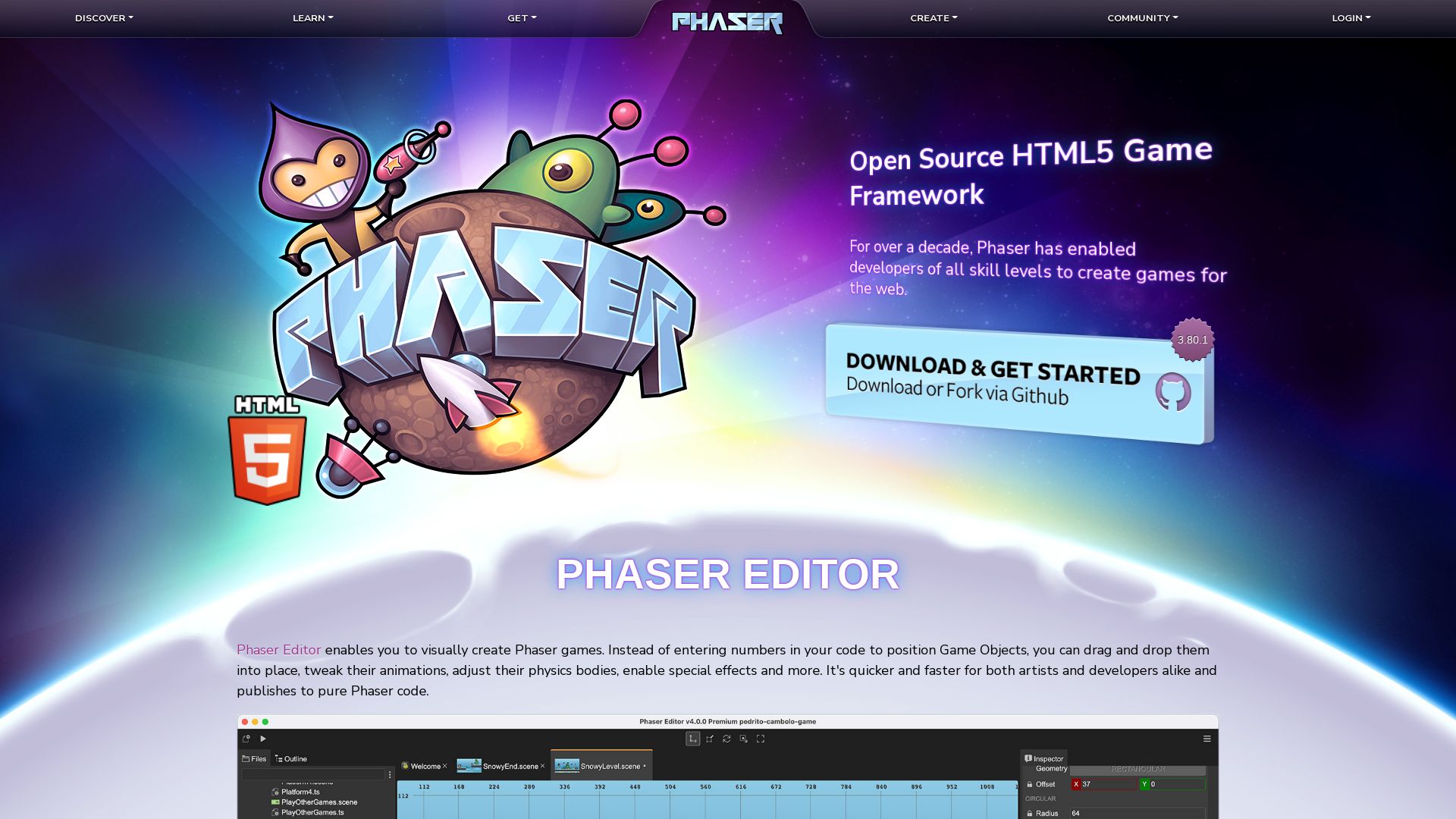
Enter the dynamic realm of game development with Phaser, a leading 2D game framework. With its roots in JavaScript and TypeScript, Phaser redefines HTML5 game development for both desktop and mobile platforms.
Phaser Top Features
- Multiplatform compatibility: Deploy games seamlessly on iOS, Android, and native desktop applications using tools like Apache Cordova and PhoneGap.
- Fast rendering: Utilizes Canvas and WebGL renderer for speedy rendering, and auto-switches based on browser support.
- Robust physics systems: Features multiple physics frameworks including Arcade Physics, Ninja Physics, and P2.JS.
- Audio support: Enables web and HTML5 audio for immersive sound playback.
- 1800+ examples: No more head-scratching. Get started with a treasure trove of examples and community support, making game development an absolute breeze.
- Upcoming interactivity: Look forward to enabling interactivity, and keyboard and mouse input for dynamic movement and player interaction in games.
| Phaser Versions | Key Features |
|---|---|
| Phaser 1 | Includes the Pixi.js library. |
| Phaser CE (Community Edition) | Current recommended stable platform. |
| Phaser 3 | Custom WebGL renderer, modular structure, ongoing development. |
| Phaser 4 (In-development) | TypeScript rewrite of Phaser 3. |
Phaser Limitations
- Lack of 3D support: Phaser primarily supports 2D gaming projects.
- Complexity for beginners: Despite comprehensive learning resources, the learning curve can be steep for beginners.
Phaser Pricing
Great news for budding developers – Phaser is a free, open-source framework. Unleash your creativity without shelling out a single penny.
Phaser Use Cases
Indie Game Developers
With Phaser’s receptive framework, utilize the treasure trove of features and resources to scale from concept to creation.
Education Institutes
Deploy Phaser in coding bootcamps or institutes to teach game development, thanks to its pedagogically sound structure and support.
Educational Games
Animate fun, interactive games that not only entertain but also educate, a perfect blend of learning and play.
Roblox

Founded by David Baszucki and Erik Cassel, Roblox is an online platform launched in 2006 which empowers users with the tools for creating and interacting with massive multiplayer games. With over 100 million active users and a library of more than 50 million user-generated games, Roblox has established its foothold in the gaming industry.
Roblox Top Features
- Uses proprietary engine, Roblox Studio, for dexterous game creation.
- Offers an extensive content library with over 50 million user-generated games.
- Robust social interaction features like adding friends and chat functionality.
- Financially rewarding to game creators, with projected payouts of over $100M in 2019.
| Feature | Description |
|---|---|
| Integration | Blends with Blender for modelling and animating, amplifies user creativity. |
| Platform Diversification | Supports development for Windows, macOS, iOS, Android, and various gaming consoles. |
| Online Safety | Institutes player safety with algorithms blocking sensitive personal information and inappropriate imagery. |
Roblox Limitations
- Under scrutiny for reports of adult content, misuse by adult players.
- Criticized for issues such as moderation difficulties and child-exploitative practices.
- Dependence on micro-transactions could be prohibitive for numerous players.
Roblox Use Cases
Use case 1 – Game Developers
With the Roblox Studio and compatibility with Blender, developers can design, animate, and push their games to a vast audience.
Use case 2 – Educational Institutions
Roblox’s focus on unstructured play and diverse resources makes it an excellent tool for educational institutions to teach programming and game development basics.
Use case 3 – Small Businesses and Freelancers
By developing commercial content on Roblox, small businesses and freelancers can monetize their creations, exploring a new revenue stream.
SpriteKit
![]()
As we delve into the world of AR game development alternatives, SpriteKit emerges as a potent contender. It stands out as a game development framework specifically catering to iOS and macOS platforms. With a profound thrust on 2D game creation, this framework integrates graphical animation and a physics-based gameplay for an enriched user experience.
SpriteKit Top Features
- Architecturally built over the SceneKit Framework.
- Employs Box2D physics engine that renders a lifelike texture to object interactions.
- Flourishes on Swift language – an instrument that propels code efficiency and ease of game development.
- Offers centralized game creation via cross-platform support with Game Center and iCloud.
- Allows a series of actions to be implemented in succession for tactical game creation.
- Accommodates adaptability, with core focus on 2D game creation for iOS and macOS platforms.
- Equipped with physics engine, textures, sprites, particle system editor as core components.
- Includes particle systems and scene editing options that further bolster its usability.
| Enhanced performance | The use of circular shapes may lead to reduced collision accuracy. |
| Greater collision accuracy | An alpha mask can be employed at the cost of reduced performance. |
SpriteKit Downsides
- SpriteKit development is limited to the Apple ecosystem.
- Although the use of Swift language enhances code efficiency, specific expertise in Swift and iOS development is a prerequisite.
- Lateral game development efforts could be slightly tedious.
- Although compatible with 64-bit architecture of iPhone 5S, future device compatibility is not assured.
SpriteKit Use Cases
Use case 1 – MVP Methodology
With its extensive suite of features and its adaptability for creating 2D games on iOS and macOS, SpriteKit can be an ideal choice for developers working with the MVP (Minimum Viable Product) development methodology. Its assistance in rapid prototyping accrues substantive benefits for startups.
Use case 2 – Game Analytics
Its capabilities in facilitating game creation via cross-platform support with Game Center and iCloud, also make it a commendable tool for processing game analytics. This cross-platform support enhances the efficiency and speed of game development.
Use case 3 – Apple Ecosystem Development
For those whose development efforts centre exclusively on the Apple ecosystem, the SpriteKit framework is a viable QA choice. Its compatibility with swift coding language and its architecting over the SceneKit framework enable seamless iOS and macOS game development.
O3DE
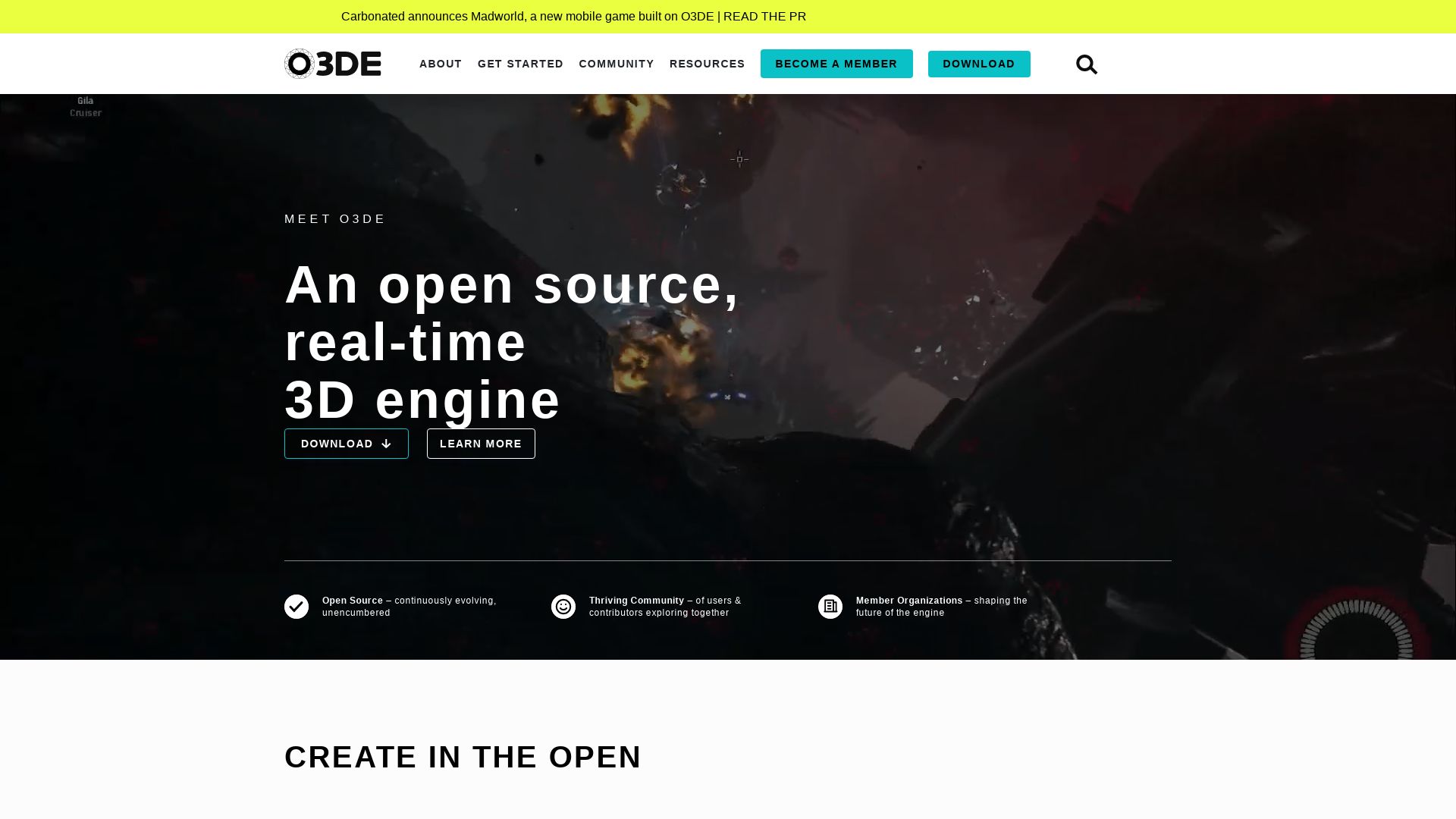
Developed by the Open 3D Foundation, O3DE, short for Open 3D Engine, is a powerful, open-source, real-time 3D engine known for its modular architecture and high performance. It caters to a wide range of uses, from gaming to complex simulations, boasting a strong industry backing from firms like AWS, Epic Games, Huawei, Intel, and Microsoft.
O3DE Top Features
- Open-source and modular: O3DE’s architecture allows developers to add or remove precompiled gems without recompiling the entire engine.
- Seamless workflow: Features like a physically based renderer, Script Canvas or Lua for runtime logic, Python scripting support and networking capability facilitate workflow.
- Support for a range of languages: O3DE supports extension languages including C++, GDScript, C#, and Unity’s C#.
- Powerful assets management: It possesses data-driven asset workflows, high-performance math libraries and automated code generation through CMake.
| Key Feature | Benefit |
|---|---|
| Multi-GPU Support | Facilitates better performance and visuals. |
| Contributor-friendly | Encourages further growth and advancements. |
| Supports Multiple OS | Broadens the range of end-user platforms, including Android and iOS. |
O3DE Limitations
- While it originated from the Amazon Lumberyard, the Lumberyard-based game New World received mediocre reviews signalling potential limitations and issues.
- Competition like Unreal Engine, Godot, Unity outshine O3DE in certain performance aspects.
- Requires technical expertise: Languages like C++, Lua, Python demand a steep learning curve.
O3DE Pricing
Being an open-source platform, O3DE is free to use, encouraging collaboration and contribution.
O3DE Use Cases
Use case 1: Game Development
O3DE permits developers to design high-performance, interactive games using its robust feature set and configurable modular architecture.
Use case 2: Simulations
With unparalleled physics simulation, O3DE stands as an effective tool in planning and simulating real-world phenomena.
Use case 3: Content creation
The engine’s capacity for asset creation and cinematics makes it fitting for content creation in the realms of AR and VR.
Hannah Stewart
Content writer @ Aircada, tech enthusiast, metaverse explorer, and coffee addict. Weaving stories in digital realms.



